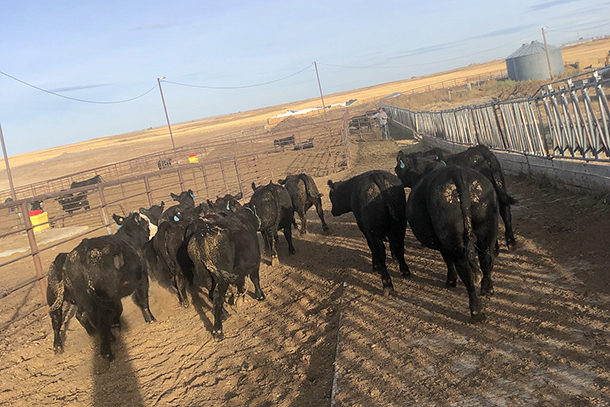We weaned our calves in October. It’s a transition period for the farm, a literal metamorphism as the juvenile animals prove themselves to be an independent entity. They were weaned, branded and weighed, and they entered the record as the baseline of our future herd. We are always hopeful that these animals will thrive, but like anything, there is no guarantee no matter how well we attempt to manage the variables.
When we adjusted the weight for the time factor, we found that the calves weighed, on average, 100 pounds more than last year’s class. I asked Craig what was different. He heeded and hummed and decided that the cows were in better shape coming into calving. A good explanation and proof his micromanagement paid off.
About a week after weaning, when the bawling of the calves had ceased and they’d adjusted to the feedbunks, I went outside late in the evening to shut my chicken coop door. I heard bellering from the conditioning pen. Dressed in pajama pants stuffed into Bogs, I ran inside to let Craig know. I thought a calf was stuck in the head catches and figured he’d be better able to handle the situation.
I pulled on my coveralls and went back out to help. I arrived just in time to see Craig stab his pocket knife into the side of a bloated calf. It was a last-ditch effort to save her life. It didn’t work, and we watched as she took her last labored breath. It was heartbreaking and demoralizing. Of course, I’d seen calves and cows die before, but there was something about this one. As a veterinarian, Craig is an old pro of such events, but I am still a bit sensitive about such things, and I found a few tears sliding down my cold cheeks as I wandered back inside.
I’d again asked my question: What did we do differently? Craig shook his head and shrugged his shoulders. It was probably the feed ration he’d made up for them. Still a little too hot for their young bellies. A good explanation and proof that the micromanagement was not paying off.
Then just this last weekend, I got a phone call from Craig, who was out doing chores. He had another calf bloating, but he’d caught it earlier. Could I help? I again pulled on my coveralls and headed out. He had the bull calf in the squeeze chute and, in proper veterinarian fashion, was puffing into the bloat tube he put down the calf’s throat. He’d push air into it and then pull it away from his head and let the rumen gasses escape. I played the part of pushing on the calf’s side, trying to encourage the gas. Craig would get a mouth full of the foul rumen and sputter and spit. I’d laugh, and he’d say this is better than taking care of horse colic, where he was sucking in, not just puffing out.
When we got all the gas out we thought we could, we pumped a couple of gallons of mineral oil and water into the calf. The oil would break up the frothy bloat that was keeping the cow from belching. Using our hands and our mouths, we spent an hour keeping the calf alive – a vivid example of micromanagement of our herd.
Sometimes I think we manage our herd to death. It definitely felt that way when I watched the bloated heifer die. But then again, we managed that bull calf right back to life. Maybe that is how it is with agriculture; we manage our cows or crops to death and manage them back to life each season, year after year. For us, maybe there is no middle ground. It’s the cycle of our business. Hot or cold. Dead or alive. Sitting on the fence may feel the safest, but it is never the place we succeed.











